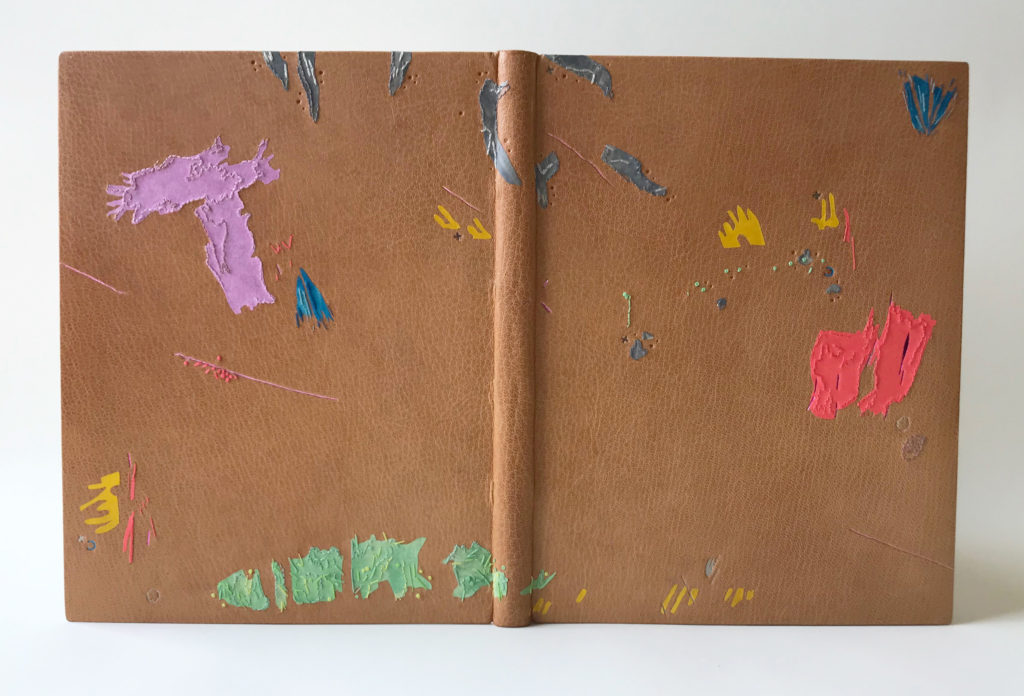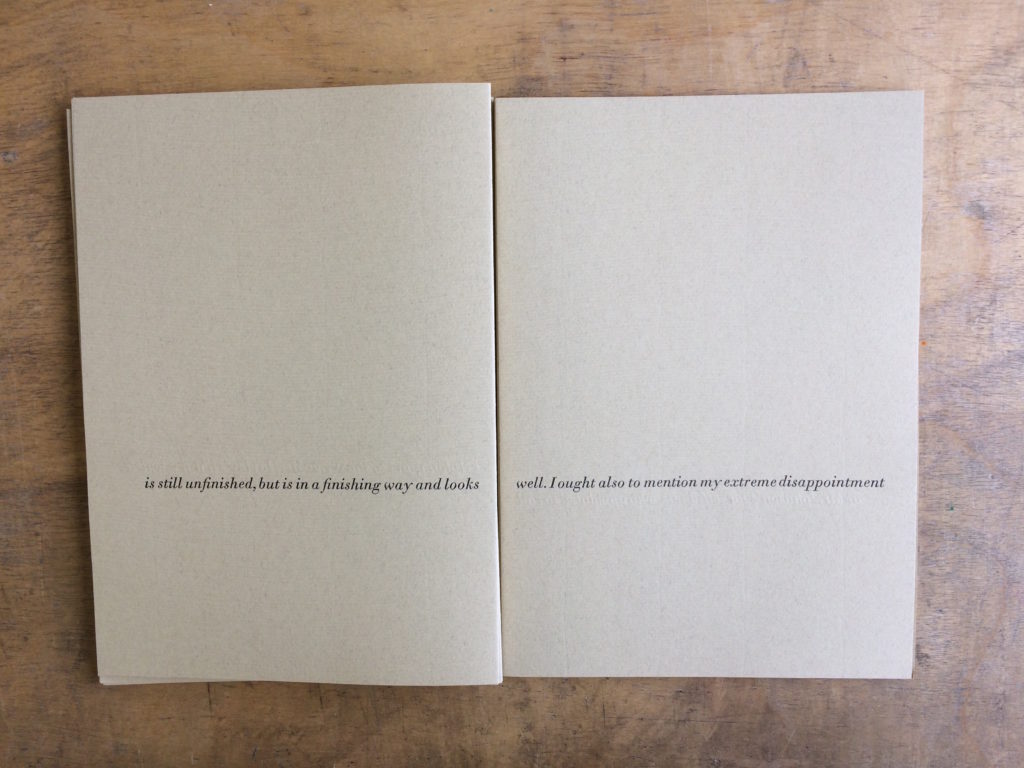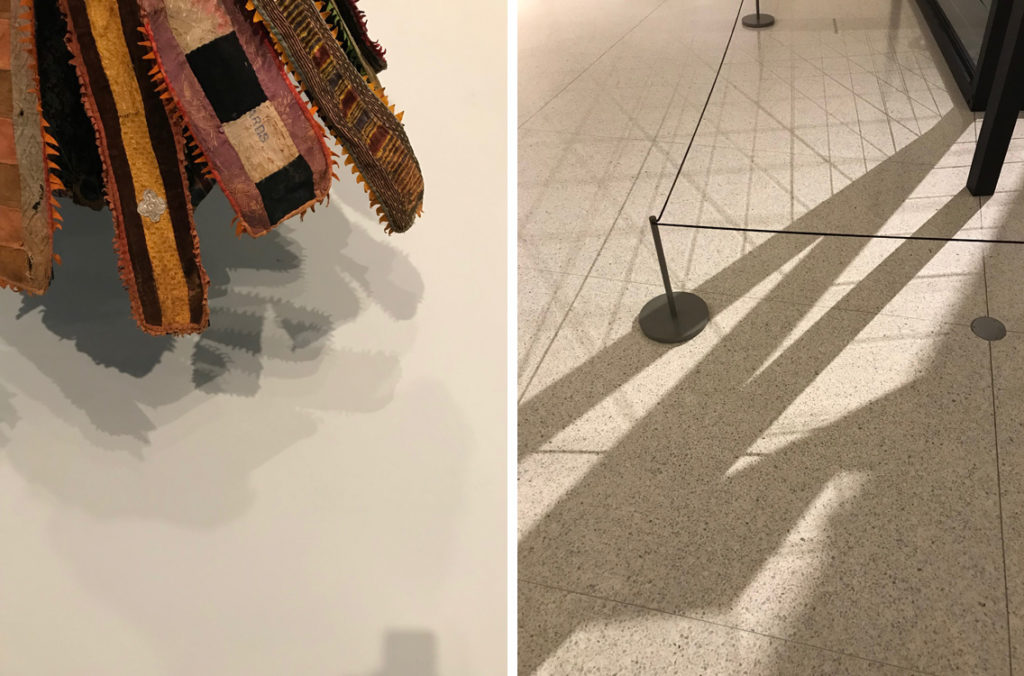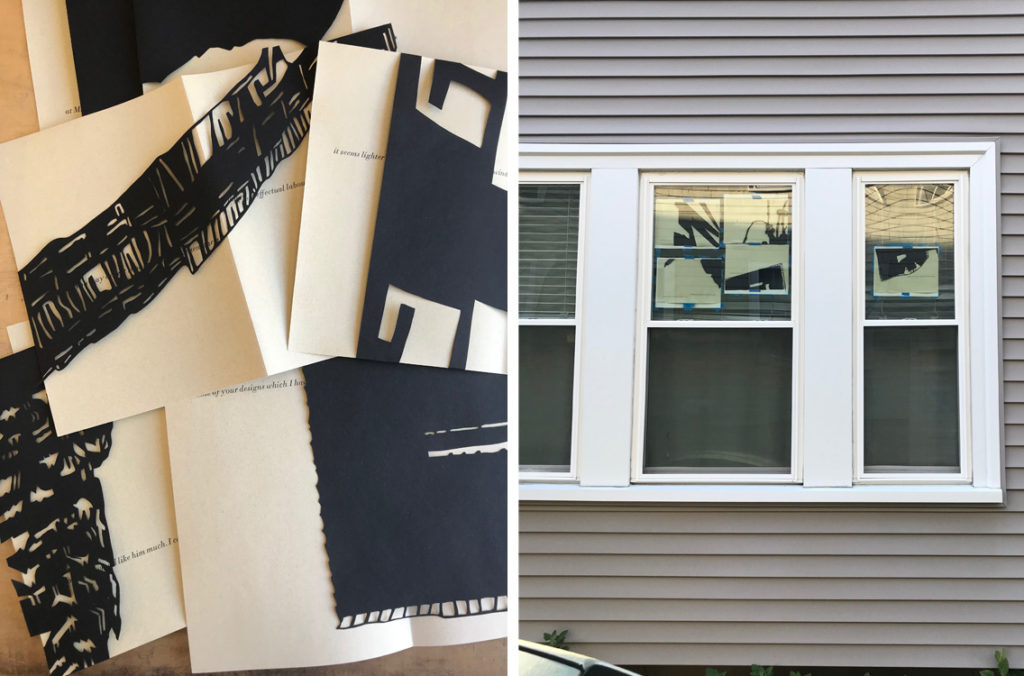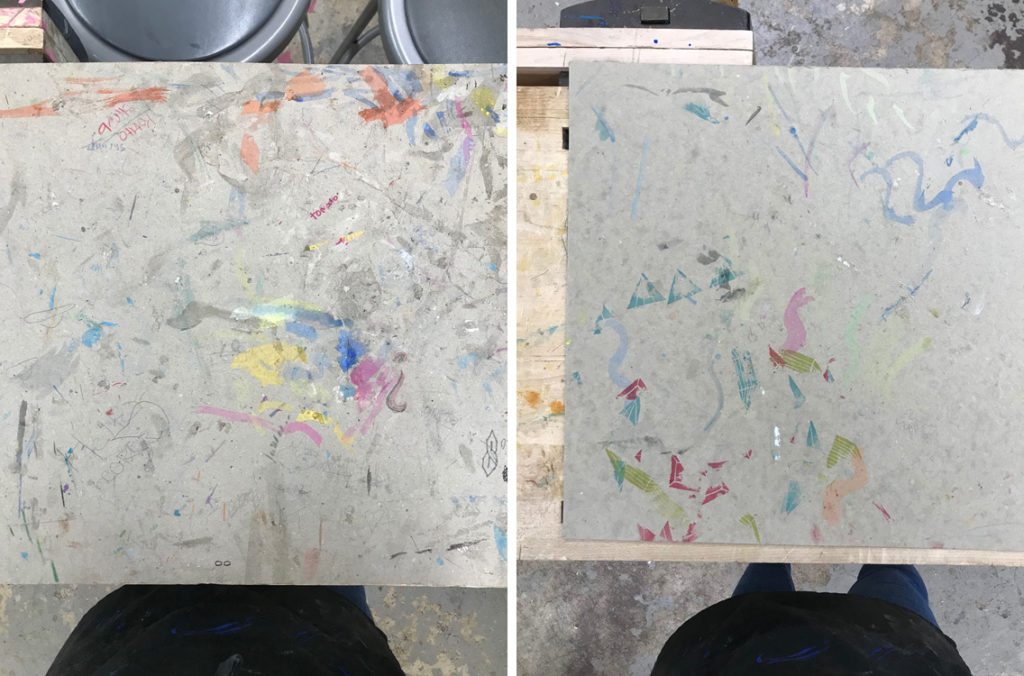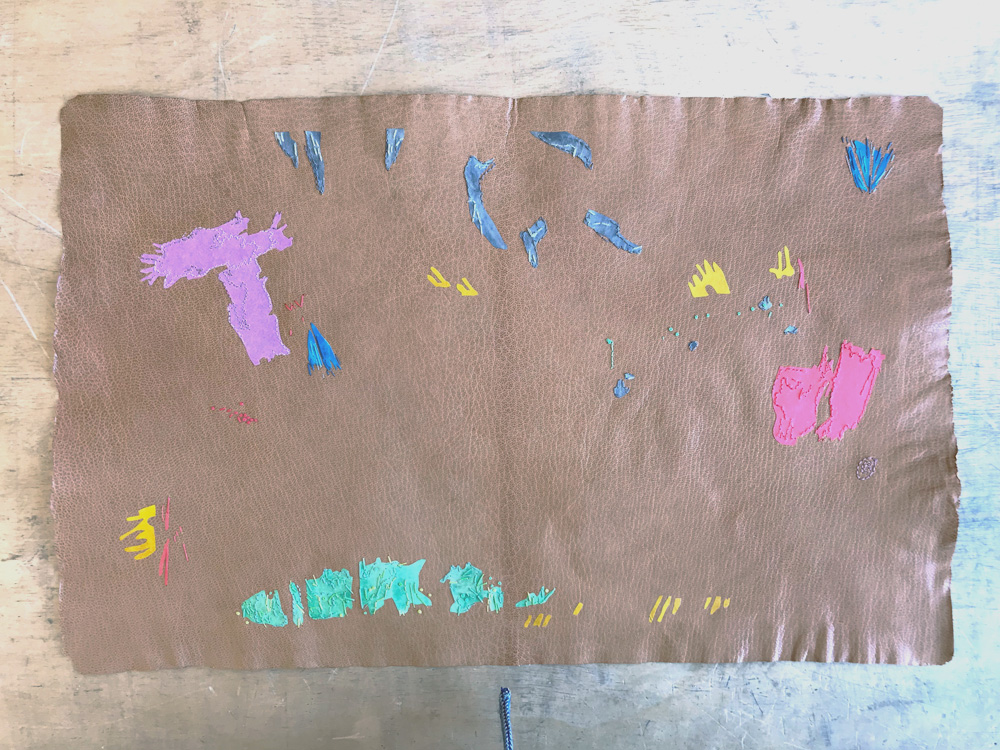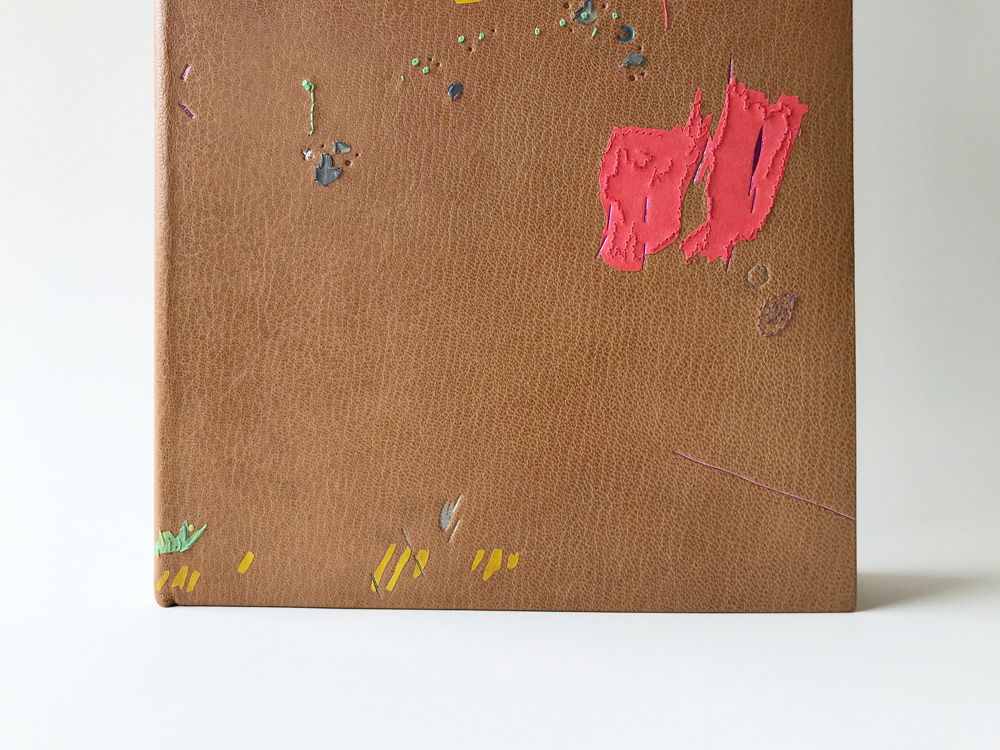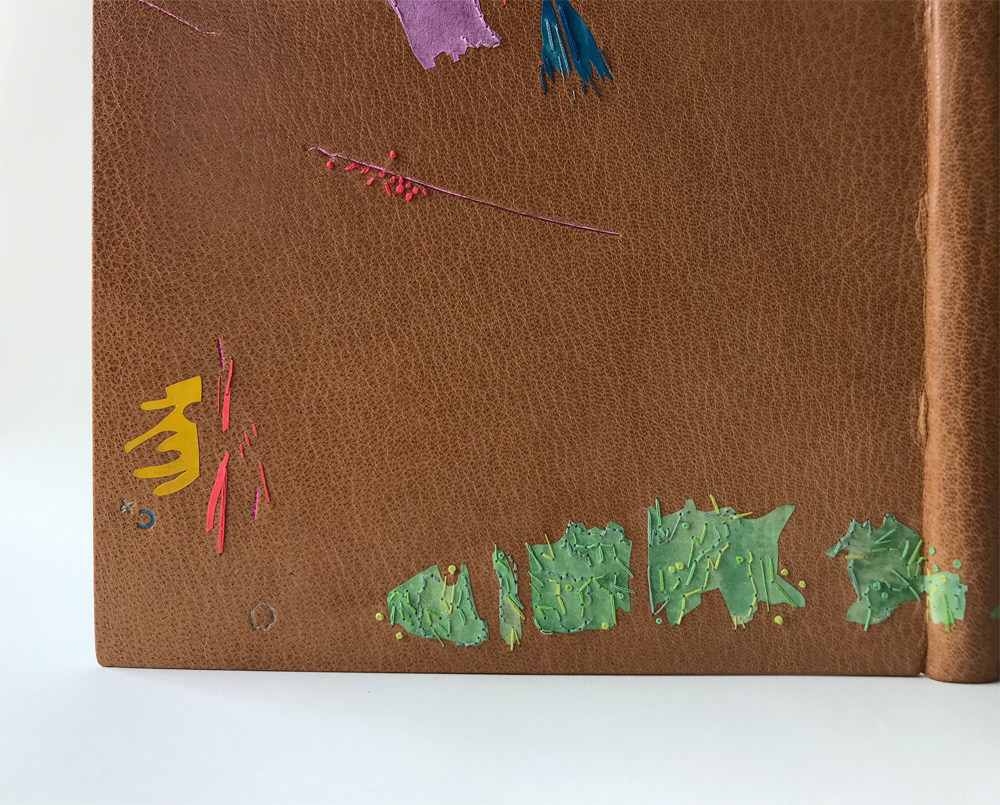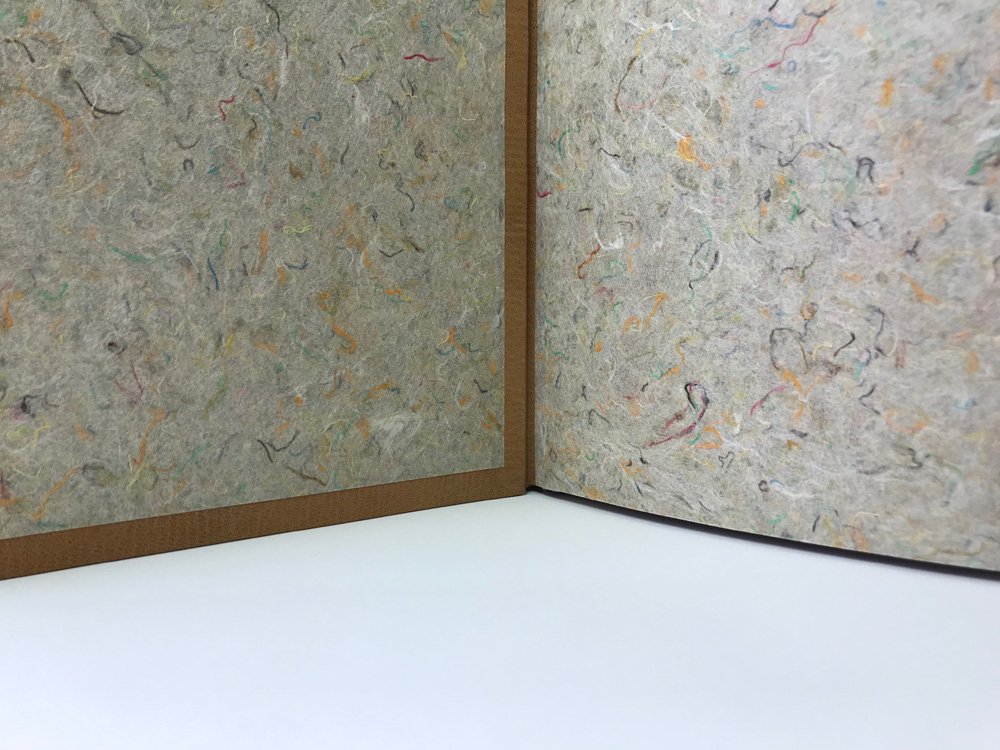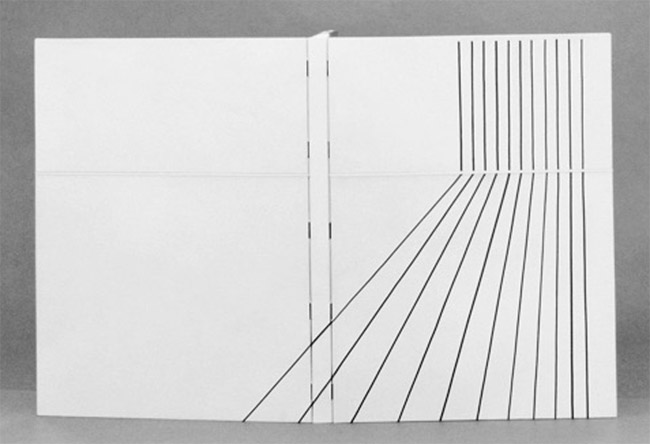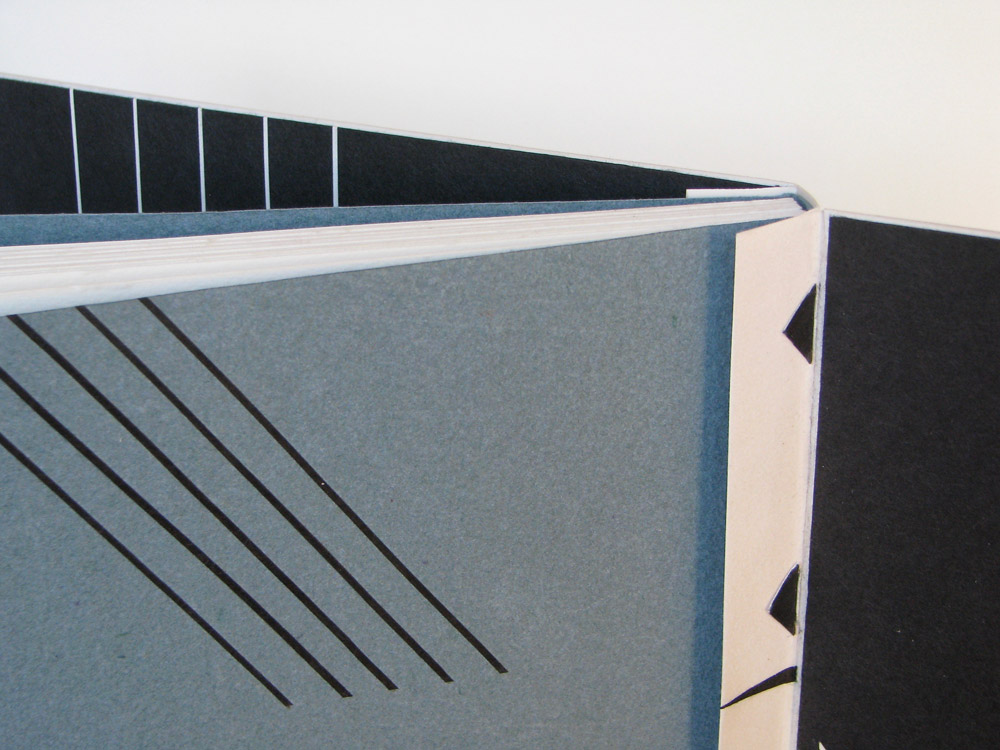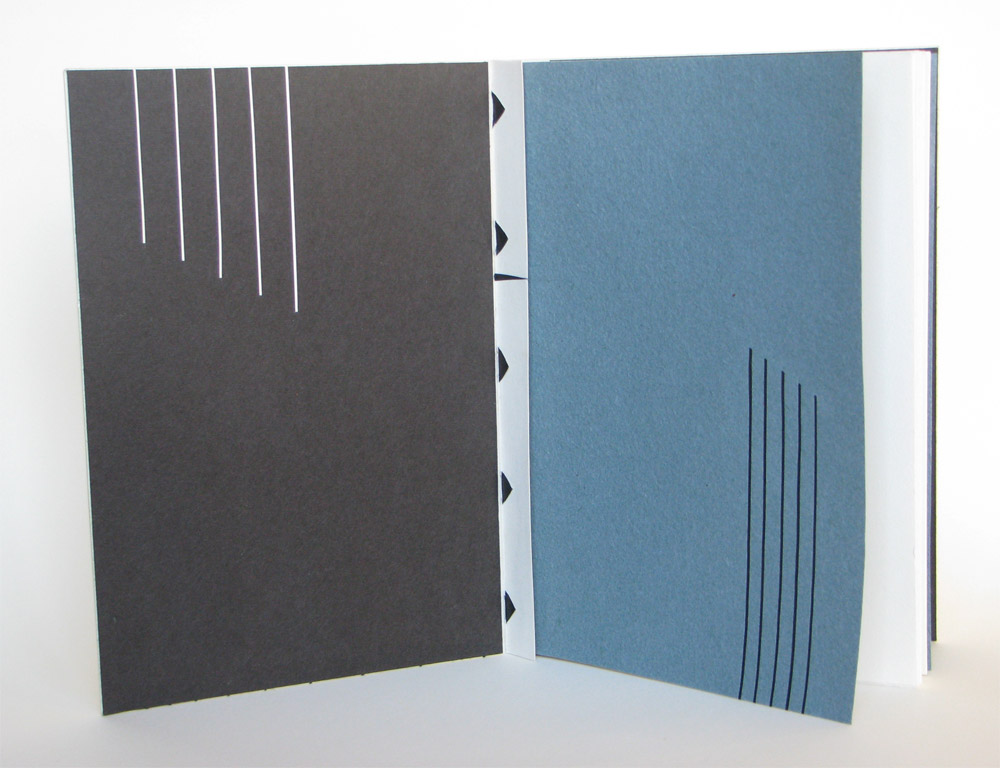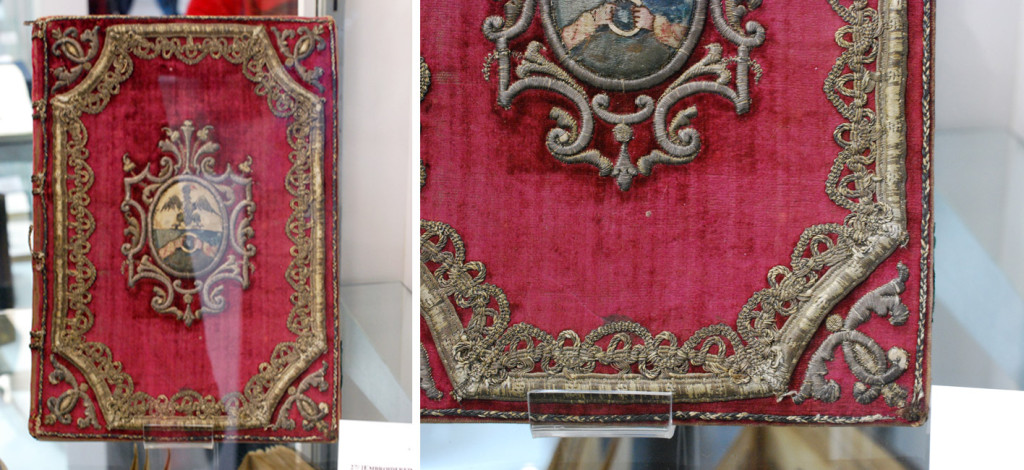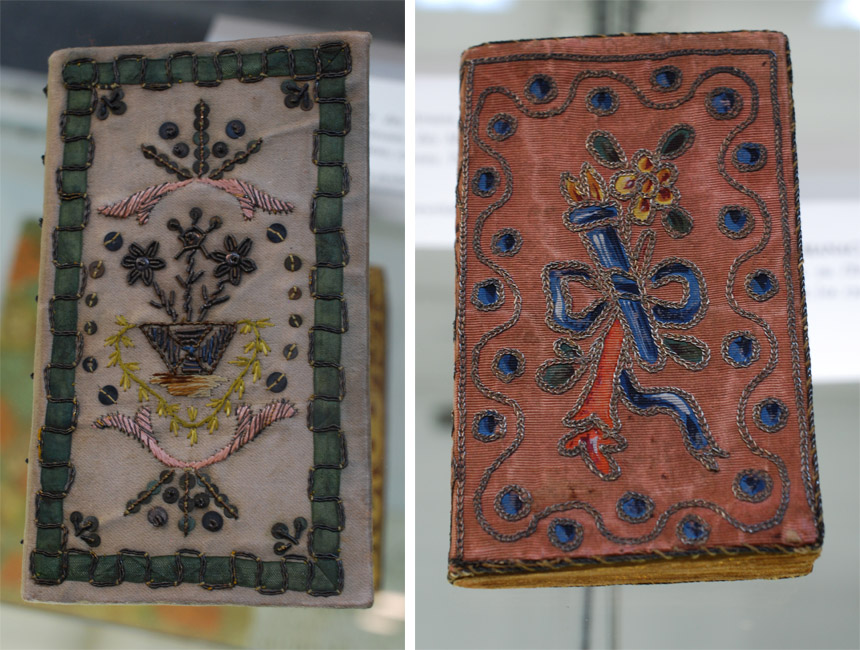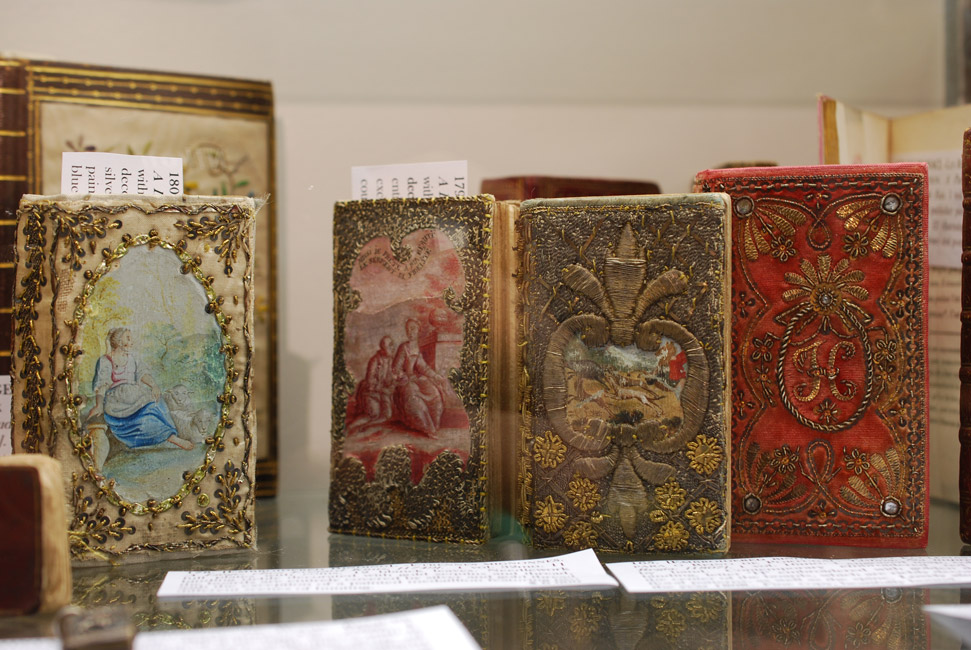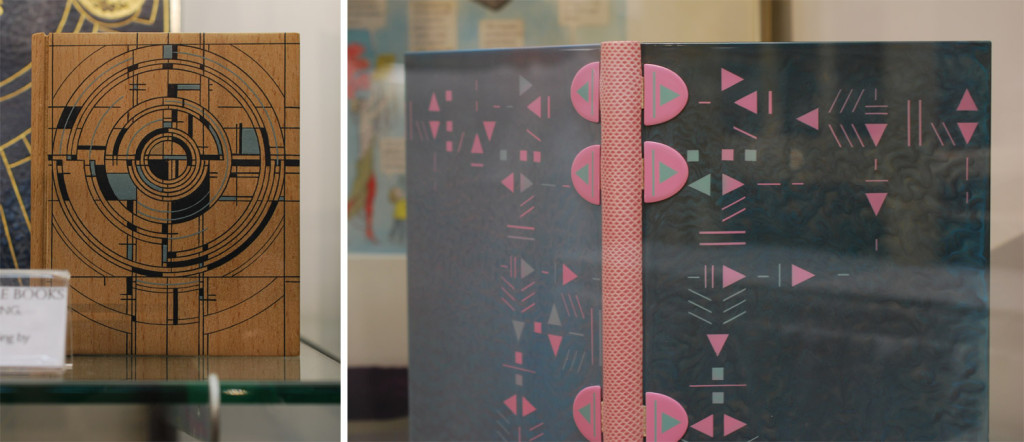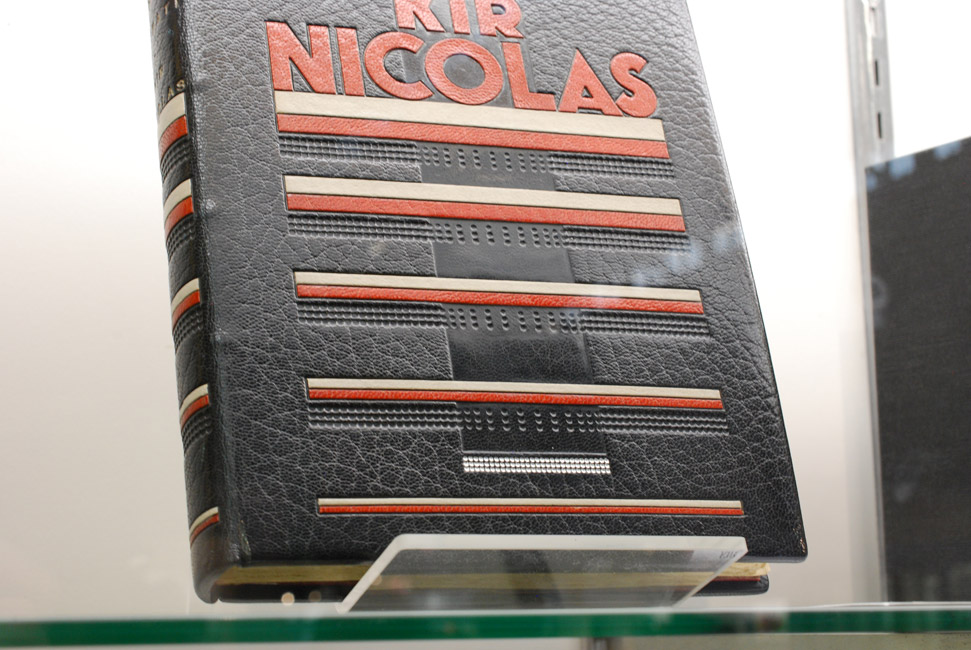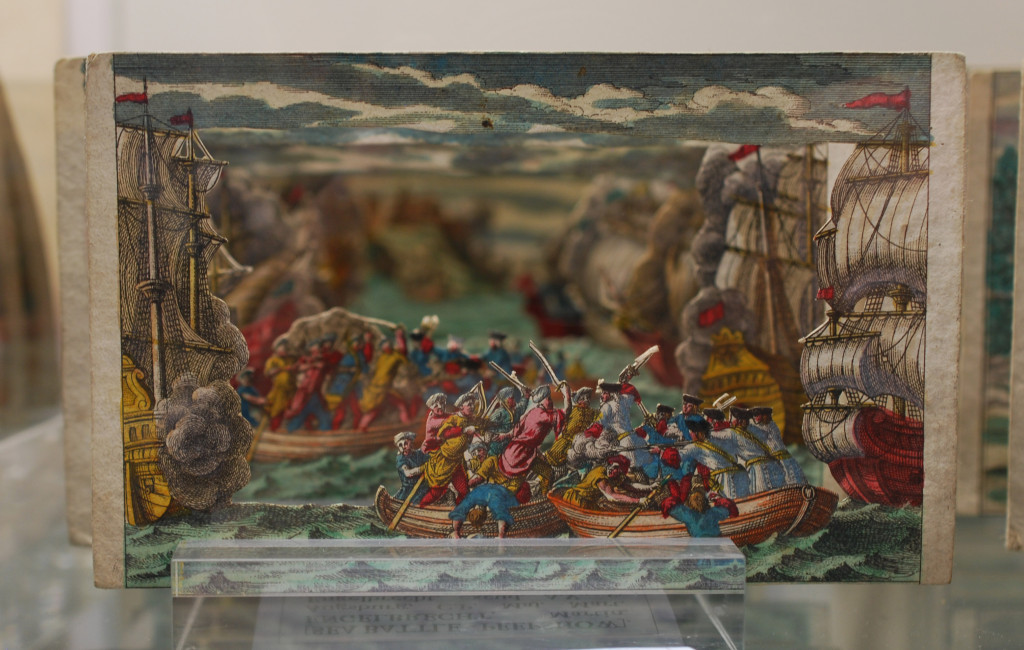Being lost in a state of creativity and production is a splendid place to be as an artist. William Blake, the Romantic poet, painter and printmaker, referred to this as ‘happy abstract’. This concept was highlighted in a letter written by Blake to one of his patrons in 1801, where Blake expressed his apology for the delay and that something more interesting had come along.
This letter became the content of the set book for the second OPEN • SET exhibition sponsored by the American Academy of Bookbinding. This triennial event features finely crafted design bindings from all over the world. Binders were invited to submit their work into either category: the Open Category allowed the binder to choose their own text block and the Set Category gave each binder the same text block.
Happy Abstract was printed by the immensely talented Russell Maret. A printmaker whose work is coveted by many and hard to obtain by many bookbinders to bind. Maret split up the letter to a single line per page descending from the head to the tail. Since this layout left a large margin around the printed text, binders were invited to add decoration to the inside of the book as well. A very exciting prospect to design throughout the entirety of the book.
PAGES
For the design on both the pages and the binding for Happy Abstract, I wanted to create something that was inspired by the beauty of unintentional marks and shadows. The inspiration for the shadows came during visits to museums and art galleries, where I captured the shadows cast by various works of art. These complex shadows add to the aura and beauty of the work, but are also captivating on their own.
I wanted to recreate these shadows on the pages of the book. To do this I cut stencils with black paper to act as masks during the sun-bleaching process. Some of the stencils were cut down further after a certain period of time to offer the gradation seen in the image above. I taped the pages to windows at my studio and my home for a length of about 3-4 weeks. My studio gets more direct sunlight and offered a richer ‘shadow’ from the sun-bleaching.
The stencils were placed on only one side of the folio, the chosen side was mixed up throughout the text block. This gave a disjointed display of shadows and a spread could range from no shadows, one shadow, or two different shadows. You can see views inside the book by clicking here.
The endsheet closest to the text block was cut to mimic one of the stencils used for sun-bleaching. The cut endsheets cast a shadow on to the first and last page of the text block, giving the reader a similar experience to what first inspired me.
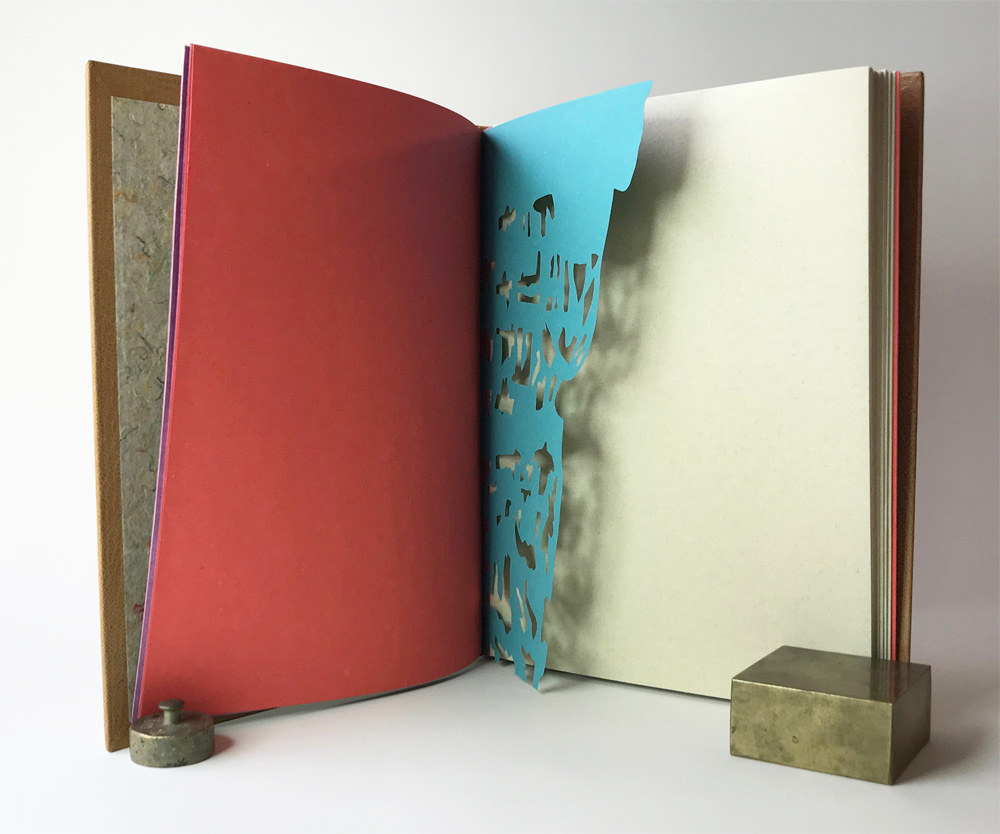 BINDING
BINDING
I came to find the inspiration for the binding from my middle school students. My colleague Colin Urbina and I teach a Book Arts Middle School program through the North Bennet Street School in Boston. We teach a variety of artist book structures in addition to having them create their own content. They use all manner of instruments to do this: watercolor, crayon, colored pencils, markers, ink, charcoal and pastels. Each bench is set up with a piece of binder’s board to protect the surface from their flurry of creativity. The consequence of this creates a collection of abstract and unintentional marks.
I pulled various shapes and marks from these boards to create a new arrangement for the binding. These shapes were then translated as back-pared onlays using a mix of handmade paper and hand-dyed calfskin. To capture the spirit of the watercolor markings, I layered the dyes with a paint brush (seen on green, grey and blue onlays) to make it look mottled.
The markings would be built up in three layers using the following techniques: onlays, embroidery and tooling. Some elements would stand alone, but I was really interested in how these techniques would interact with each other. The embroidery is done mostly in a random way, with varying lengths and thicknesses to the stitches. I also used back-stitch and French knot, two common stitches in my work.
With the embroidery finished I moved forward with covering and the third layer of the design: tooling. I used a random selection of tools from my collection (including some handle letters) to build up the design further. Impressions were done over the onlays and right along side the embroidery. I used a variety of pigmented matte and metallic foils in similar tones to the onlay pieces. I love this small addition of color and shimmer that the tooled impressions brought to the overall design.
I used a very special handmade paper for the fly leaf and paste down. Papermaker and activist Mary Hark made a trip to Ghana to aid in the building of a papermaking studio. With an abundance of kozo growing as an invasive species, the community was able to harvest this plant to benefit their environment and build their business. This Ghanian kozo handmade paper has thread inclusions collected from a nearby textile factory. The circumstances, color palette and use of thread felt like a perfect pairing to the text and design of the binding.
To see the entire catalog of bindings in the OPEN • SET exhibit click here. Even though the exhibit will be traveling across the country, it may be challenging to see it in person for a while. The Grolier Club in New York City, which served as the opening venue, posted images from the exhibit here.
